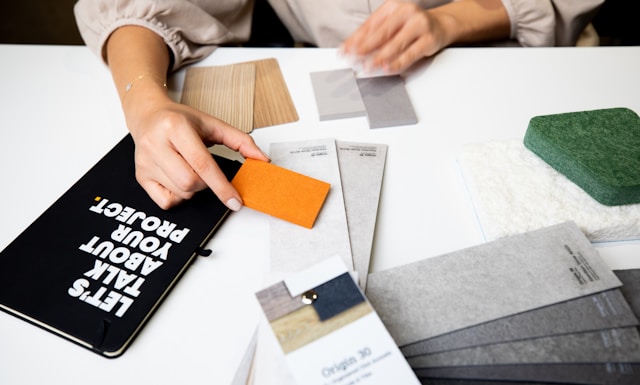Introduction Interior design has always evolved with culture, technology, and creativity. Today, AI is shaping interior design by bringing automation, personalization, and innovation together. From analyzing space layouts to predicting design trends, Artificial Intelligence is revolutionizing how we imagine our homes making them smarter, more efficient, and deeply connected to human needs. Artificial intelligence is changing
Introduction
Interior design has always evolved with culture, technology, and creativity. Today, AI is shaping interior design by bringing automation, personalization, and innovation together. From analyzing space layouts to predicting design trends, Artificial Intelligence is revolutionizing how we imagine our homes making them smarter, more efficient, and deeply connected to human needs.
Artificial intelligence is changing the way we live, work, and create, and interior design is no exception. Today, AI is transforming how designers plan, visualize, and execute spaces, making the process faster, smarter, and more personalized. From automated layout suggestions to realistic 3D visualizations, AI tools are helping designers and homeowners make better decisions while saving time and money. This article explores the impact of AI on interior design, its practical applications, benefits, and how it is shaping the future of creating beautiful and functional spaces.
Benefits of AI in Interior Design
AI offers numerous benefits for designers, clients, and homeowners alike.
- Efficiency: AI automates repetitive tasks like measuring, sketching, and layout generation, allowing designers to focus on creativity and strategy.
- Accuracy: By analyzing data and simulating outcomes, AI reduces errors in measurements, color choices, and material selection.
- Cost Savings: Efficient planning and fewer mistakes help save money on materials and labor.
- Personalization: AI tailors designs to individual preferences, creating spaces that feel unique and comfortable.
- Sustainability: AI can suggest eco-friendly materials, energy-efficient lighting, and layouts that reduce waste, promoting greener design choices.
These benefits are not only improving workflow for professionals but also enhancing the client experience, making interior design more accessible and satisfying.
Designing Tomorrow: How AI Transforms Interior Design
1. The Rise of Smart Homes
AI is changing interior design through smart home technology. Devices powered by AI can control lights, temperature, and security. They learn what you like and adjust your home automatically to fit your mood and lifestyle. These systems make homes more comfortable and convenient. Over time, they get smarter and can even predict what you need before you ask. AI is turning houses into personalized, easy-to-live-in spaces.
2. AI in Space Planning and Layouts
In modern interior design, beauty and practicality go together, and AI is changing how we achieve that balance. AI can study room size, furniture placement, and how people move around to create layouts that are both attractive and useful.
Instead of designing by hand or guessing, designers can quickly create many floor plan options, compare them, and adjust things like furniture and lighting with great precision.
This smart approach saves a lot of time and makes sure every part of the space is used well. The result is a home that looks beautiful and works perfectly showing how AI combines style with smart design.
3. Personalized Design Through Data
AI is changing how we make homes personal. It can study your habits, online likes, lifestyle, and even how colors affect your feelings to create spaces that reflect who you are.
AI can help pick wall colors that match your mood and suggest furniture that fits your comfort and style. These tools make designing a home more precise and creative.
The result is a space that feels truly unique and like an extension of yourself. With AI, interior design isn’t just about trends — it’s about making homes that inspire, comfort, and express your personality.
4. Predictive Design: The Next Step
The next evolution in design is anticipation not reaction. With predictive analytics, AI is shaping interior design by forecasting emerging trends and user needs. Designers can anticipate what materials, layouts, or aesthetics will gain popularity, helping an interior design consultant stay ahead in a fast-moving industry.
5. Sustainability Meets Intelligence
AI and sustainability are changing interior design. AI can analyze energy use, materials, and environmental impact, helping designers make smarter, eco-friendly choices.
It can suggest sustainable materials, improve natural lighting, reduce waste, and enhance indoor air quality. This helps create homes that are beautiful and kind to the planet.
With AI, interior design combines style, eco-responsibility, and thoughtful living.
6. Virtual Reality and AI Collaboration
AI and Virtual Reality (VR) are changing how we design homes. Homeowners can now “walk through” their future spaces in 3D, seeing every corner, color, and material.
AI lets people instantly change layouts, colors, or furniture to see how different options will look in real time. This makes design more fun and interactive, not just drawings on paper.
For designers, AI and VR improve accuracy, reduce mistakes, and speed up decisions, making clients happier and more confident.
Together, AI and VR turn interior design into an exciting, realistic experience where ideas come to life before building even starts.
AI and Creativity: A Perfect Partnership
One common misconception is that AI limits creativity, but the opposite is true. By handling repetitive tasks and analyzing vast amounts of data, AI frees designers to focus on innovation and artistic expression. Designers can explore more possibilities, experiment with unconventional ideas, and refine concepts faster than ever before.
For example, AI can generate multiple layout options in seconds, allowing designers to experiment with different furniture arrangements, color palettes, and lighting setups. This collaborative relationship between humans and AI ensures that creativity is enhanced, not replaced, while still maintaining practicality and functionality.
Challenges and Considerations
Despite its many advantages, AI in interior design comes with some challenges.
- Learning Curve: Designers need to learn how to use AI tools effectively, which may require training and adaptation.
- Overreliance on Technology: While AI is powerful, human judgment and intuition are still essential for making final design decisions.
- Data Privacy: AI tools often collect user data to provide personalized recommendations, making data security and privacy important considerations.
- Cost of AI Tools: Some advanced AI software can be expensive, which may be a barrier for smaller design firms or individual designers.
By addressing these challenges thoughtfully, designers can maximize the benefits of AI while minimizing risks.
Future Trends in AI-Driven Interior Design
The future of AI in interior design is promising. Emerging technologies like machine learning, augmented reality, and predictive analytics are expected to further enhance the design process.
- AI-Powered Smart Homes: AI will integrate with smart home devices to create interiors that adapt to the needs and habits of residents.
- Generative Design: AI will automatically generate design options based on goals, constraints, and preferences, creating entirely new possibilities.
- Sustainable Design Solutions: AI will help designers optimize energy use, reduce waste, and choose sustainable materials, making eco-friendly interiors more accessible.
- Global Collaboration: Cloud-based AI tools will allow designers from different parts of the world to collaborate on projects in real time, expanding creative possibilities.
These trends indicate that AI will continue to transform interior design, making it more efficient, personalized, and sustainable.
Conclusion
The way AI is shaping interior design proves that technology isn’t replacing creativity it’s expanding it. By combining human imagination with artificial intelligence, the future of living spaces will be more personalized, sustainable, and emotionally connected than ever before. The homes of tomorrow will think, feel, and evolve just like the people who live in them.
















